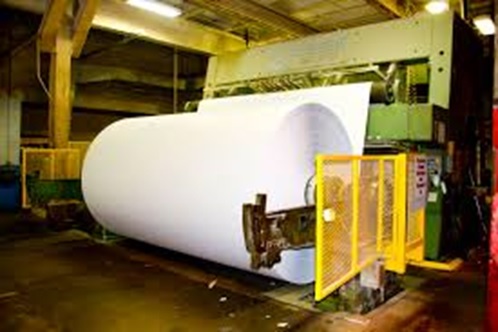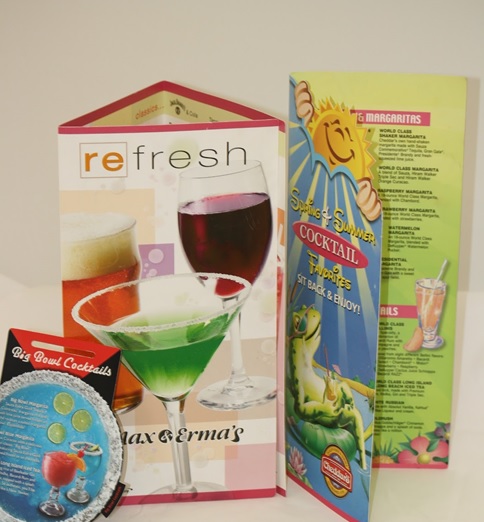The demand for durable substrates is growing. Today, print partners are choosing synthetic paper over corona-treated, die-extruded plastic such as PVC vinyl or polystyrene. The advantages are great, and the applications are numerous. In this article, we highlight why.
Printing on Corona-Treated Plastic
For decades, corona-treated, die-extruded plastic was one of the few durable substrate options, yet its non-porous surface and low dyne level creates multiple challenges. The plastic requires specialized equipment and inks that dry by oxidation or UV lamps. It also requires various press adjustments and ink changes. Printing on corona-treated plastic can burden printing companies with a high volume of waste and slowed production processes due to drying problems, offsetting, static issues, and overall product defects.
Today, printers are opting for tear-resistant polypropylene synthetic paper that offers multiple advantages over printing on corona-treated plastic.
Durability of Calendered and Clay-Coated Synthetic Paper
 The key advantage of printing on either clay-filled or clay-coated polypropylene is its high dyne level combined with its microporous surface that allows ink to bond to the surface. This helps to speed up the drying process as well as protects the printed image from scratching and scuffing when exposed to harsh conditions or extreme environments. In comparison, printing on corona-treated plastics takes longer to dry and is more susceptible to ink scratches or scuffing when exposed to rough handling or sunlight discoloration.
The key advantage of printing on either clay-filled or clay-coated polypropylene is its high dyne level combined with its microporous surface that allows ink to bond to the surface. This helps to speed up the drying process as well as protects the printed image from scratching and scuffing when exposed to harsh conditions or extreme environments. In comparison, printing on corona-treated plastics takes longer to dry and is more susceptible to ink scratches or scuffing when exposed to rough handling or sunlight discoloration.
A Wide Range of Grades, Thickness and Finishes for Multiple Applications
Synthetic paper has two distinct manufacturing processes that differentiate it from corona-treated plastics. The first is a calender manufacturing process that delivers a single layer, clay-filled construction. The calendered synthetic paper comes in multiple grades, finishes and gauge thickness, from .003 mil to .035 mil. It produces a more uniform gauge tolerance (+ or – 5%) over corona-treated, die-extruded plastic. Its clay-filled construction can be made with added elements to enhance its opacity, brightness, foldability, tear- and UV-resistance when exposed to harsh, outdoor environments.
 The second manufacturing method produces a biaxially-oriented polypropylene film via a tri-laminated extrusion with a clay-coated emulsion. This method produces a smooth matte finish on both sides. The bright white clay coating produces a high dyne level that allows inks to easily bond to its surface for easy printing by offset, flexo and digital — UV inkjet and latex inkjet — without any pretreatment.
The second manufacturing method produces a biaxially-oriented polypropylene film via a tri-laminated extrusion with a clay-coated emulsion. This method produces a smooth matte finish on both sides. The bright white clay coating produces a high dyne level that allows inks to easily bond to its surface for easy printing by offset, flexo and digital — UV inkjet and latex inkjet — without any pretreatment.
Multiple Grades with Better UV-, Tear- and Temperature-Resistance Over Corona-Treated Die-Extruded Plastics
Because calendered synthetic paper is made from a mixture of polypropylene and calcium carbonate, it can be made with different additives for a wide range of applications. These include high opacity for block-out window signs, low opacity for back-lit transit signs, high propagated tear and UV resistance that allow it to be used outdoors up to one year under direct sunlight without turning brittle or changing color. High temperature resistance from -50F° up to 220F° allows it to withstand extreme temperature changes without cracking or distorting.
With the ability to produce different grades with better physical properties, calendered synthetic paper offers a wide variety of printing advantages over corona-treated die-extruded plastics. For example, clay-filled calendered synthetic paper has less static and a higher dyne level (44-46 dyne) over corona-treated polystyrene and rigid PVC vinyl. This advantage allows calendered synthetic paper to print and register at a faster speed allowing more efficient printing through both high speed offset and flexographic printing processes.
Based on its construction, calendered synthetic paper is popular for printing maps, manuals, menus, book covers, horticultural tags, lumber tags, outdoor posters, sewn banners, back-lit signs and block out window posters that need to hold up under harsh conditions.
Environmentally-Friendly and 100% Recyclable
Synthetic paper made from a combination of polypropylene and calcium carbonate is 100% recyclable under the polypropylene recycling code #5. As a recyclable material, it also stays out of the waste stream longer, saving valuable space in our landfills.
 Unlike corona-treated plastic, synthetic paper is free of toxins, heavy metals and stearates that are detrimental to the environment. It uses very little water in the manufacturing process, which preserves Earth’s natural resources. When incinerated, it also generates no sulfur, nitrogen or dioxin gases.
Unlike corona-treated plastic, synthetic paper is free of toxins, heavy metals and stearates that are detrimental to the environment. It uses very little water in the manufacturing process, which preserves Earth’s natural resources. When incinerated, it also generates no sulfur, nitrogen or dioxin gases.
In both the calendering and clay-coating manufacturing processes, trim waste is recycled back into the manufacturing process to produce 100% of the finished product without waste.
Alternatives Banned in Europe
Choosing the right substrate depends on the type of print quality, durability and environmental image that customers require. Corona-treated polystyrene will generally be the lowest cost option, however, it is very brittle and easy to tear. It is also highly flammable and has very limited temperature- and UV-resistance. The substrate usually has either a very rough matte surface or a smooth glossy surface that is not uniform from side to side. Therefore, polystyrene is not the best choice for printing a durable image.
Another option is PVC vinyl, which may have better tear-resistance and print characteristics over polystyrene, but it normally requires a topcoat or corona treatment to anchor special inks to its surface. PVC vinyl will breakdown and become brittle over time. It also has a tendency to turn yellow when exposed to sunlight or even fluorescent light when used indoors.
Also, when PVC breaks down, it turns into hydrochloric acid if exposed to moisture. PVC vinyl is not a popular plastic for recycling due to its environmental implications and is therefore banned from retail packaging applications in Europe.
Print Shops Can Differentiate with the Right Substrate. Ask for expert advice.
Not all plastics are created equal. Being able to print on a wide range of synthetic paper substrates in a variety of grades is a huge differentiating factor for today’s print shop. When considering printing on corona-treated plastics, it’s important to know the substrates printing and physical properties, and if it will be suitable for high tear-, temperature- or UV-resistance, especially for an application where the image needs to hold up and be durable over a long period of time.
Technical support and expert printing advice are provided by the team at Hop Industries. Advice can also be provided by a wide variety of ink manufacturers, coating companies, and fountain solution manufacturers that are related to the offset industry.
To help select the right substrate, Hop Industries offers free test samples and expert advice on the various synthetic paper grade options for printing, folding, gluing, die-cutting and sewing, as compared to corona-treated die-extruded plastic. For example, ask a Hop synthetic paper expert about the right substrate for backlighting that will withstand high temperature and UV resistance when exposed to direct sunlight for more than six months. Printers can also ask Hop for expert advice about the best type of synthetic paper for digitally printing by UV inkjet, latex inkjet or other types of digital printing processes. For more information, visit www.hopsyn.com or call 800-524-0757.
Written by Jack Smith, Sr. Vice President, Hop Industries Corporation
Jack Smith is the Sr. Vice President of Hop Industries Corporation. In 1993, he launched the Hop-Syn synthetic paper division of Hop Industries. Smith was instrumental in developing seven grades of Hop-Syn, from back-lit and blockout, to foldable and heavy gauge tear-resistant stock for the P-O-P and packaging markets. He has extensive knowledge in printing processes including, offset, flexo, screen, laser, UV and latex inkjet, as well as fabricating processes including, cold and hot melt glue, film lamination, injection molding, top coating and pressure sensitive coating. Smith’s technical knowledge and experience were fundamental in helping to tailor the Hop-Syn synthetic paper for niche markets.